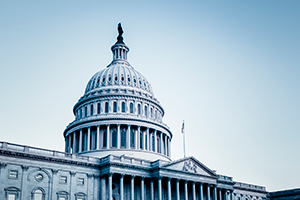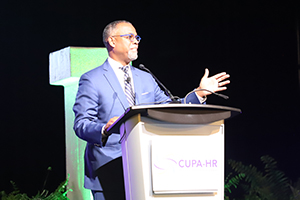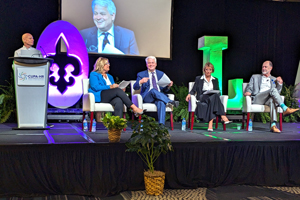“Did you hear that another team member, someone we all knew and worked with, quit today?” said a colleague. “Isn’t this the third one since last month? What is happening in that department?” was my counter question, echoing the concerns of many in the office. Have you ever experienced a similar situation at your workplace and wondered what caused this sudden voluntary attrition? Was it a competitor higher education institution stealing trained resources, or was there a sudden need for higher salaries due to the current economic factors, etc.? After a week, a LinkedIn post mentioned, “… it was time to move forward, as I had hit a breaking point. Quitting is the first step towards finding a healthy workplace!”
Research has consistently shown that women are more susceptible to workplace incivility than men. However, this trend can be mitigated when the direct supervisor demonstrates ethical leadership (Young et al., 2021). This finding offers a glimmer of hope, suggesting that a change in leadership could significantly influence employee morale. Is the stress of adapting to a new management at work a contributing factor? Or is it a case of leadership failing to adjust to the existing culture? Or is it due to incivility in the workplace? These are the questions that keep on occurring.
My experience working at an institution primarily for women has sparked my curiosity and deepened my concern. I often pondered whether these departures were triggered by a sudden event or a long-standing issue that had been suppressed. This connection to the topic has driven me to delve into the reasons behind abrupt job resignations among women in public organizations and the need to understand their impact on resources, policies, etc., in higher education.
What is Workplace Incivility?
According to the research of Tolkerson, Holm, Bäckström, and Schad, numerous factors contribute to the perpetuation of workplace incivility, including the importance of organizational aspects and experiencing incivility from others. Workplace incivility has been defined as “…low-intensity deviant behavior with ambiguous intent to harm the target, in violation of workplace norms for mutual respect. Uncivil behaviors are characteristically rude and discourteous, displaying a lack of regard for others” (Torkelson et al., 2016).
In her Harvard Business Review article, Christine Porath, professor of management at Georgetown University, wrote that most leaders need to recognize tangible costs. “Through a poll of 800 managers and employees in 17 industries, we learned how people’s reactions play out.” Among workers who have been on the receiving end of incivility:
- 48% intentionally decreased their work effort.
- 47% intentionally decreased the time spent at work.
- 38% intentionally decreased the quality of their work.
- 80% lost work time worrying about the incident.
- 63% lost work time avoiding the offender.
- 66% said that their performance declined.
- 78% said that their commitment to the organization declined.
- 12% said they left their job because of the uncivil treatment.
- 25% admitted to taking their frustration out on customers.” (Porath & Pearson, 2013)
In a webinar on AACN, Addressing the Harmful Effects of Gaslighting in Academic Nursing, Cynthia Clark, founder of Civility Matters, Professor Emeritus at Boise State University, and award-winning professor, scholar, and author who has done extensive research on workplace incivility, discussed “Gaslighting in Academia” (Profile of Dr. Cynthia Clark). This intrigued my curiosity and inspired me to explore this topic.
What is Gaslighting?
Gaslighting is a form of psychological manipulation that involves making someone doubt their reality, memory, or perception. It can occur in various contexts, such as interpersonal relationships, politics, media, and workplaces. Gaslighting can have serious adverse effects on the mental health and well-being of the victims, such as anxiety, depression, low self-esteem, confusion, and loss of trust (Sarkis, 2018).
Gaslighting and Workplace Incivility in Higher Education
While workplace incivility is a broader term that refers to any rude, disrespectful, or aggressive behavior that violates the norms of mutual respect and professionalism, Gaslighting can be considered a specific and extreme form of workplace incivility that involves not only disrespecting or harming the target but also manipulating their sense of reality and identity (Clark, 2024). Individuals or groups can perpetrate gaslighting, which can be intentional or unintentional, depending on the motives, awareness, and power dynamics of the actors involved. Gaslighting can be manifested in various ways, such as lying, denying, withholding, trivializing, blaming, or gaslighting by proxy (Sarkis, 2018). Gaslighting can occur in multiple contexts, but it is especially harmful in the workplace, undermining employees’ trust, confidence, and performance (Clark, 2024).
In higher education, gaslighting can occur when faculty, staff, or students are subjected to subtle or overt harassment, discrimination, bullying, or abuse by their colleagues, supervisors, or peers. For example, a faculty member may be gaslighted by their administrators who constantly undermine their achievements, question their competence, or deny them opportunities for promotion or recognition. A staff member may be gaslighted by their co-workers who spread rumors, exclude them from social events, or sabotage their work. A student may be gaslighted by their instructor who belittles their contributions, ignores their requests, or grades them unfairly. These examples illustrate how gaslighting can create a hostile, toxic, and unhealthy work environment in higher education institutions (Clark, 2024).
Inefficient Workplaces
Incivility adds to faculty/administrator stress levels, erodes self-esteem, damages relationships, threatens workplace safety and quality of life, and negatively impacts faculty recruitment, retention, and job satisfaction. Therefore, creating and sustaining communities of civility is imperative for all academic work environments (Clark et al., 2021). Gaslighting can have severe and lasting effects on the psychological, emotional, and physical health of the targets, such as post-traumatic stress disorder (PTSD), dissociation, chronic pain, and suicidal ideation (Stern, 2018).
Nation’s Current Workplace Landscape
According to the Surgeon General’s Framework for Workplace Mental Health and Well-Being, one of the Current Priorities of the U.S. Surgeon General is “Workplace Well-Being.” The survey suggested that 76% of U.S. workers reported at least one symptom of a mental health condition, 84% of respondents said their workplace conditions had contributed to at least one mental health challenge, and 81% of workers reported that they would be looking for workplaces that support mental health in the future (Written Document on Workplace WellBeing.2022). To support workplace wellbeing, creating a plan with the following five essential components can help reimagine workplaces as engines of wellbeing.
The five essentials of the framework are:
- Opportunities for Growth (Written Document on Workplace WellBeing.2022)
Recommendations
Regular assessments are needed, and the data needs to be studied at higher educational institutions. HR, Compliance, and Ethics Policies should include examples to increase awareness of various levels of incivility. Before quitting, employees should be aware of the available options and use forums to discuss examples to be self-aware. Providing periodic surveys and reviews, updating training based on feedback and current issues for employees at higher education on HR policies, the Code of Ethics, and faculty ombudsmen can help prevent and address gaslighting and other workplace incivility.
When employees quit, it is no longer uncommon to suddenly walk out of the door without a courtesy notice period or transition report of their current responsibilities. While employers are concerned about employee performance and evaluations for merit raises, retention, etc., they should be publicly ranked based on their performance towards employees working in government and non-profit organizations. We have all heard the phrase “Treat others just as you want to be treated!”, but are we all implementing it at our workplaces?
Ranjitha Rao is the Budget/Financial Analyst Manager at the College of Nursing at Texas Woman’s University. She is dedicated to supporting academic and administrative goals through financial oversight. As an active member of the TWU Staff Council, she fosters a spirit of unified community among staff members and provides opportunities for their democratic representation. Through her involvement in the Staff Council, she promotes a positive and collaborative work environment and serves as a representative advisory member, presenting recommendations to university leadership. Ranjitha is also committed to fostering healthy workspaces, ensuring faculty, staff, and students thrive in a supportive and productive environment. Ranjitha holds a background in engineering and is currently a Ph.D. student focusing on leadership in higher education. She also holds a Master’s in Business Administration, with an emphasis in Accounting and Management. Additionally, as an adjunct, Ranjitha has taught first-year incoming classes, focusing on curriculum and strategic success, to help students transition smoothly into their academic journeys, along with accounting and healthcare administration classes for undergraduates. Ranjitha’s research interests include competency-based education, workforce development, leadership, management, and financial well-being in higher education. In her free time, Ranjitha enjoys exploring financial trends, participating in community events, and contributing to initiatives that promote financial literacy and education.
References
Anderson, J. (2023, August 2,). Five Essentials for Workplace Well-Being. https://blogs.ifas.ufl.edu/orangeco/2023/08/02/five-essentials-for-workplace-well-being/
Clark, C. M., & Fey, M. K. (2019). Fostering Civility in Learning Conversations: Introducing the PAAIL Communication Strategy.10.1097/NNE.0000000000000731
Clark, C. (2019). Combining Cognitive Rehearsal, Simulation, and Evidence-Based Scripting to Address Incivility.10.1097/NNE.0000000000000563
Clark, C. , Landis, T. & Barbosa-Leiker, C. (2021). National Study on Faculty and Administrators’ Perceptions of Civility and Incivility in Nursing Education. Nurse Educator, 46 (5), 276-283. doi: 10.1097/NNE.0000000000000948
Porath, C., & Pearson, C.The Price of Incivility. January – February 2013, https://hbr.org/2013/01/the-price-of-incivility
Torkelson, E., Holm, K., Bäckström, M., & Schad, E. (2016). Factors contributing to the perpetration of workplace incivility: the importance of organizational aspects and experiencing incivility from others. Work & Stress, 30(2), 115-131. 10.1080/02678373.2016.1175524
Young, K. A., Hassan, S., & Hatmaker, D. M. (2021). Towards understanding workplace incivility: gender, ethical leadership and personal control. Public Management Review, 23(1), 31-52. 10.1080/14719037.2019.1665701










